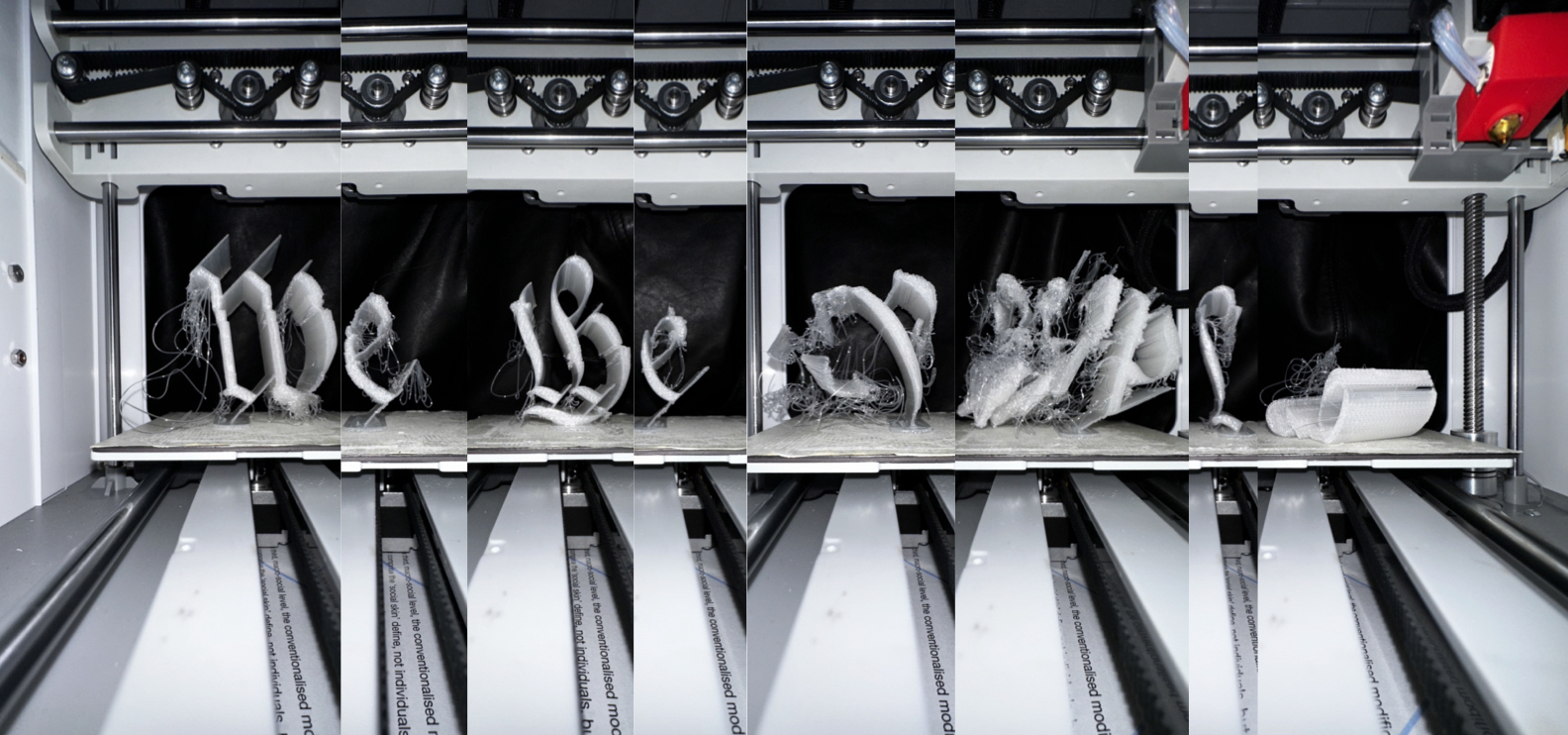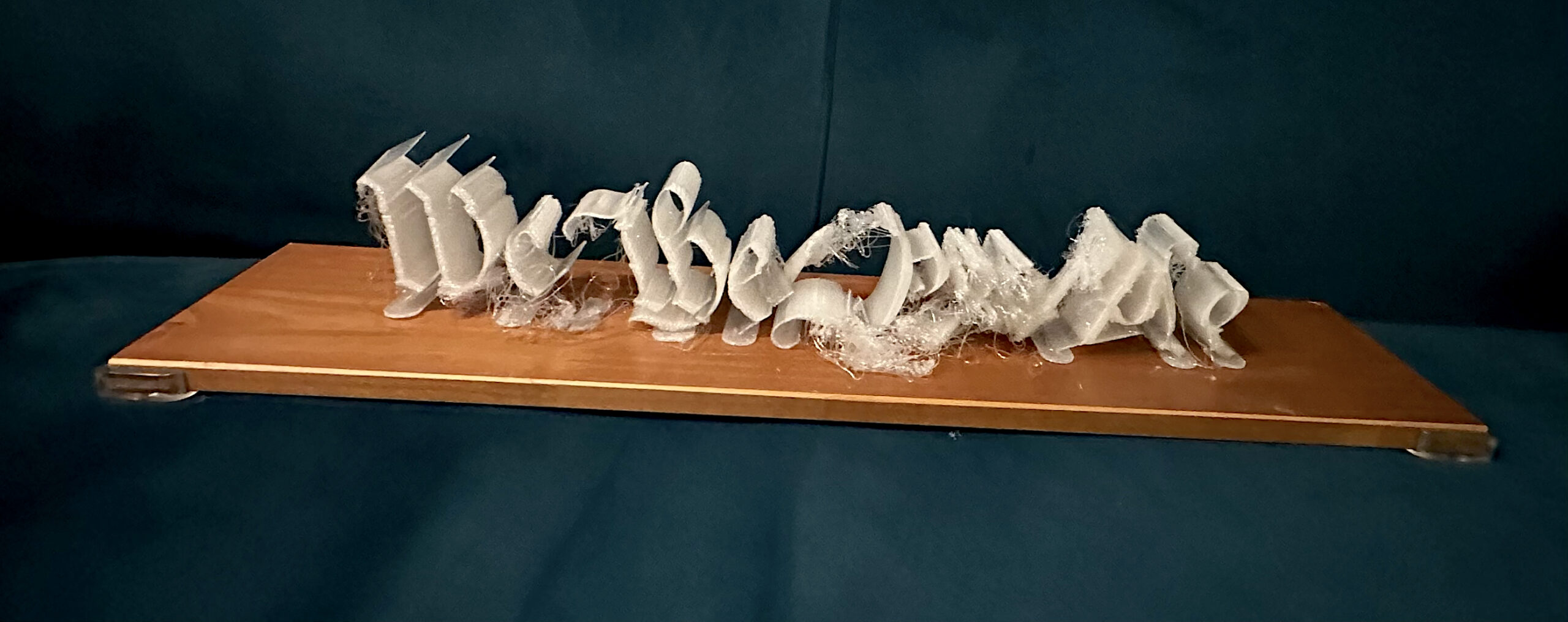WE THE PEOPLE is a flawed realization of the intended purpose of government, allowing us to call into question not only the mechanisms through which it operates but also to critically think about the true intentions of the founding fathers.
We The People: Post-Preamble
“We the People” is an immediately recognizable American symbol, both the words and the letters themselves in Thomas Jefferson’s own handwriting. My artwork translates this phrase in Jefferson’s writing into a font and is about the constraints of reality: the translation of that phrase, with all its flourishes, into a physical object will inevitably result in a changed image. Just as the laws of physics are only introduced to the artwork once it is printed, this iconic phrase inevitably meets the complications of reality in the actual practice of legislation. With this, I demonstrate that intentionality alone is not enough to support an ideology or a people. This work began as a handmade digital model, and each letter was 3D-printed in transparent filament without structural supports. The unique machine failures on each letter due to the influence of gravity on the printing process, as well as the interference of the artist (poking and weighing down parts of each letter as they were printing, just as special interest groups poke and push at our legislative system), provide a new vision of our country each time the work is produced. No two prints will result in the same distortions, each being a result of the specific context in which it was made: the air temperature inside the machine, the specific curves of the unsupported filament, the rattling of the letters to unsettle their smooth edges – every iteration of this artwork is inevitably linked to the unique physical state of the setting of its creation. The transparent PLA used to print the words, as well, is proven to not actually be transparent when put into practice because of the restraints of the 3D printing machine, further illustrating the failure to translate good intentions into actual practice. Fully assembled, WE THE PEOPLE is a flawed realization of the intended purpose of government, allowing us to call into question not only the mechanisms through which it operates but also to critically think about the true intentions of the founding fathers: it’s undeniable that their idea of liberty was not universal, even among the white men they privileged.






